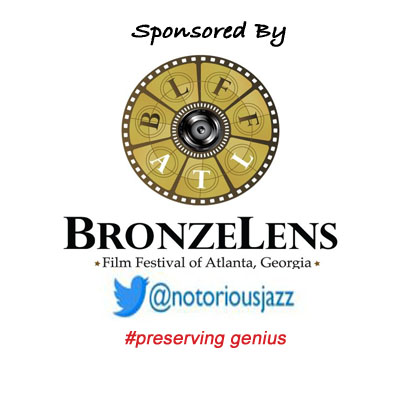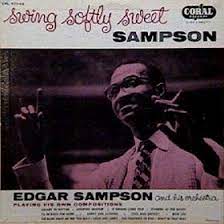
Daily Dose Of Jazz…
Edgar Melvin Sampson was born on October 31, 1907 in New York City, New York. He began playing violin aged six and picked up the saxophone in high school, then started his professional career in 1924 in a violin piano duo with Joe Colman. Through the rest of the 1920s and early 1930s, he played with many big bands, including those of Charlie “Fess” Johnson, Duke Ellington, Rex Stewart and Fletcher Henderson.
In 1934, Sampson joined the Chick Webb outfit and during his period he created his most enduring work as a composer, writing Stompin’ at the Savoy and Don’t Be That Way. Leaving Webb in 1936, his reputation as a composer and arranger led to freelance work with Benny Goodman, Artie Shaw, Red Norvo, Teddy Hill, Teddy Wilson and Webb.
Becoming a student of the Schillinger System in the early 1940s, Edgar continued to play saxophone through the late 1940s and started his own band at the end of the decade. He worked with Latin performers such as Marcelino Guerra, Tito Rodríguez and Tito Puente as an arranger.
He recorded one album under his own name, Swing Softly Sweet Sampson, in 1956. Due to illness, he stopped working in the late Sixties. Composer, arranger, saxophonist, and violinist Edgar Sampson, nicknamed The Lamb, transitioned on January 16, 1973.
More Posts: arranger,bandleader,composer,history,instrumental,jazz,music,saxophone,violin
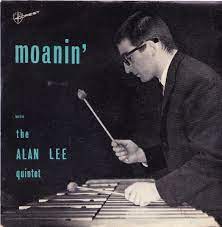
Daily Dose Of Jazz…
Alan Lee was born on July 29, 1936 in Melbourne, Australia. He was one of the first Australian jazz musicians to fuse classical music with jazz and to utilize Latin American rhythms in his music.
He led several jazz bands in Melbourne and Sydney from the late 1950s through the 1980s. Some of his recorded albums include his Seventies’ projects Gallery Concerts, The Alan Lee Jazz Quartet, Moomba Jazz ’76, Live from the Dallas Brooks Hall, and Alan Lee and Friends: Jazz at the Hyde Park Hotel in 1990, among others.
Bandleader, vibraphonist, guitarist, and percussionist Alan Lee at 86 continues to dabble in music.
More Posts: bandleader,guitar,history,instrumental,jazz,music,percussion,vibraphone
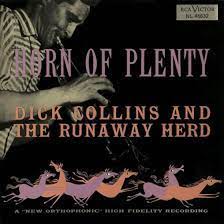
Daily Dose Of Jazz…
Dick Collins was born Richard Harrison Collins on July 19, 1924 in Seattle, Washington into a musical family where several of his parents and grandparents were professional musicians. He attended Mills College in 1946–47, where he studied music formally under Darius Milhaud, and moved with Milhaud to Paris, France for the next academic year. As a student at Mills, he first met Dave Brubeck, and while in Paris he played with Hubert Fol and Kenny Clarke.
Returning to the States he landed in San Francisco, California where he began playing with Brubeck in his Bay Area-based octet, then completed his bachelor’s degree in music at San Francisco State College. In the 1950s he performed and recorded with Charlie Barnet, Charlie Mariano, Nat Pierce, Paul Desmond, Cal Tjader, and Woody Herman. By 1957 Dick was working with Les Brown, an association that continued for nearly a decade that included worldwide tours.
In 1965, Collins took a position as a music librarian, which he held through 1967, and took a second position from 1971 to 1986, mostly receding from active performance. In later years, he still occasionally performed live or recorded, including with Nat Pierce, Mary Ann McCall, and Woody Herman.
Trumpeter Dick Collins transitioned on April 19, 2016 in Hesperia, California, at the age of 91.
More Posts: bandleader,history,instrumental,jazz,music,trumpet
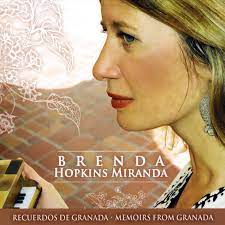
Daily Dose Of Jazz…
Brenda Hopkins Miranda was born July 14th, and raised in San Juan, Puerto Rico. Her childhood was filled with sounds from all over the world and from an early age her profound sensibilities led her to intuitively reject stylistic boundaries. She began her musical path at the age of five with piano, ballet and painting lessons at Bonneville School. Her remarkable talent got her admission to the Conservatorio de Música de Puerto Rico to begin undergraduate studies in Classical Piano at 16 while still attending high school.
Holding a Bachelors Magna cum Laude degree in Classical Piano from the Conservatorio, she was awarded a Berklee School of Music scholarship, received a Masters degree with honors in Contemporary Improvisation from New England Conservatory, and completed Doctoral Studies in Musicology at the Universidad de Granada in Spain.
As a bandleader Hopkins Miranda has released six recordings between 1998 and 2017 with her last four albums making the top 20, with three of them in the top 10 and two in the top 5 album list. A recognized composer and artist on several short films and documentaries, throughout her professional career she has been active as a first call pianist on international tours for a host of Latin American artists like Ricardo Montaner, Gilberto Santa Rosa, Marco Antonio Muñiz, Pandora, Ednita Nazario, Glenn Monroig, Yolandita Monge and many others.
In 2006 Brenda moved to Granada, Spain for two years to pursue a PHD in musicology at the Universidad de Granada. She successfully auditioned. Brenda is also a groundbreaking pioneer in education. She was the winner of the Gilles Boulet 2014 first prize and medal awarded in Florianopolis, Brazil by the Interamerican Organization for Higher Education and has created over 300 creativity exercises for musicians. Brenda gives music creativity workshops all over the world.
Pianist, composer, arranger, improviser, bandleader, and producer Brenda Hopkins Miranda currently is a professor at the Universidad Interamericana Recinto Metropolitano Music Program. She continues to perform.
More Posts: arranger,bandleader,composer,educato,history,instrumental,jazz,music,piano

Daily Dose Of Jazz…
Armando Peraza was born May 30, 1924 in Lawton Batista, Havana, Cuba and was orphaned by age 7 and lived on the streets. By twelve he was supporting himself by selling vegetables, coaching boxing, playing semi-pro baseball, and becoming a loan shark. His music career began at seventeen when he heard at a baseball game that bandleader Alberto Ruiz was looking for a conga player and Ruiz’s brother was on the same baseball team as him. Despite the absence of experience in music, he practiced and won the audition.
He left Cuba for Mexico in 1948 to tend to his sick friend, conga drummer Mongo Santamaría. They arrived in New York City in 1949 and after playing in Machito’s big band, Peraza was invited by Charlie Parker to participate in a recording session that included Buddy Rich. He recorded with Slim Gaillard in New York Cuty in 1949 in a session that produced Bongo City and toured the U.S. with him band until they reached San Francisco, California. He spent time in Mexico recording with Perez Prado and did some soundtracks for the Mexican movie industry.
Returning to the U.S. he settled in San Francisco, worked with Dizzy Gillespie, toured extensively with Charles Mingus and Dexter Gordon, and played with Puerto Rican actor and musician Tony Martinez. Armando led an Afro-Cuban dance review at the Cable Car Village Club in San Francisco, attracting a clientele from Hollywood that included Errol Flynn, Marlon Brando, and Rita Hayworth.
By 1954, he was working with pianist Dave Brubeck, Peraza met Cal Tjader, and jazz critic Leonard Feather recommended Peraza to Fantasy Records to record an Afro-Cuban album with Tjader. The result was Ritmo Caliente, which combined Afro-Cuban rhythms with a jazz sensibility. Following this he met George Shearing through bassist Al McKibbon and he spent the next twelve years with the pianist, a collaboration that put Peraza at the forefront of Afro-Cuban music.
Armando emerged as a composer, writing and recording twenty-one songs for Shearing, such as Mambo in Chimes, Mambo in Miami, Ritmo Africano, Armando’s Hideaway, This is Africa, and Estampa Cubana. These recordings were during the mambo craze in the U.S. and the world. In 1959, he joined Mongo Santamaría for the Mongo album, then became a member of Cal Tjader’s band for six years, followed by a stint with drummer Shelly Manne.
He recorded one solo album, Wild Thing, was the first Afro-Cuban percussionist to add conga drums to a rock track, an in 1972, at the age of 47, Peraza joined the rock band Santana, influencing andtrmining for nearly twenty years and played to millions of people around the world, partnering with percussionists José Areas, Mingo Lewis, Raul Rekow, and Orestes Vilató. He wrote or co-wrote sixteen songs recorded by Santana.
Peraza retired from Santana in 1990 at the age of 66, played a Santiago de Chile concert with Santana in 1992, returned to Cuba after fifty year absence in 202, and recorded on the John Santos, 20th Anniversary in 2005, At 82 years of age, in 2006 he made a rare appearance with Santana for a three show performance at the Montreux Jazz Festival in Switzerland. In 2007, he received a Lifetime Achievement Award from the Voices of Latin Rock, who present the Armando Peraza Award for achievement in the San Francisco Bay Area every year.
On April 14, 2014 Latin jazz percussionist Armando Peraza who played congas, bongos, and timbales transitioned from complications of pneumonia. He was 89.
More Posts: bongo,conga,history,instrumental,jazz,music,timbales


